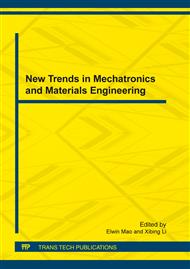p.226
p.231
p.235
p.240
p.245
p.250
p.255
p.260
p.266
Temperature On-Line Measured in Ultrasonic Vibration-Assisted Pelleting Cellulosic Biomass
Abstract:
Cellulosic biofuels have been proposed to replace part of traditional liquid transportation fuels. Cellulosic biomass is the feedstock in cellulosic biofuel manufacturing. Costs associated with collection and transportation of cellulosic biomass account for more than 80 percent of the feedstock cost. By processing cellulosic biomass into pellets, density and handling efficiencies of cellulosic feedstock can be improved, resulting in reduction of transportation and handling costs. The pellet temperature is one of the most important parameter in Ultrasonic Vibration (UV-A) pelleting. There is very few literature on the pellet temperature of UV-A pelleting. This paper mainly studied how to on-line measure the pelleting temperature, also, the detailed temperature characteristics of the pellet was obtained. The results are valuable for selecting suitable pelleting parameters and controlling the quality of pellet in UV-A pelleting. Also, the accurate measurement of the pellet temperature is helpful to understand pelleting mechanism, charring, and durability issues.
Info:
Periodical:
Pages:
245-249
Citation:
Online since:
January 2012
Authors:
Price:
Сopyright:
© 2012 Trans Tech Publications Ltd. All Rights Reserved
Share:
Citation:


